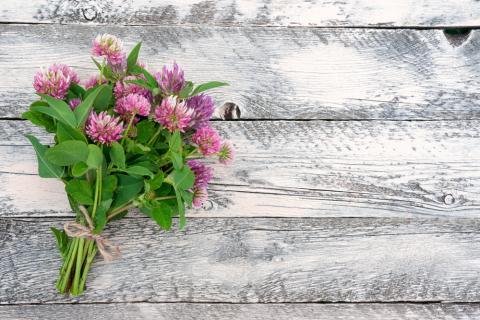
Growing herbs is often the gateway to becoming a gardener and eventually starting a vegetable garden. Many people begin by raising herbs like parsley, mint, or rosemary, which are hardy and can be added to a variety of dishes, but there’s something to be said of the lesser known herbs.
Why grow unique herbs?
Herbs are a simple way to add flavor to your food and by growing a wider variety, you support biodiversity. Birds, bees, and other pollinators are often attracted to herbs, too, making them beneficial for the environment. While most are familiar with herbal mainstays like cilantro, basil, or chives, there are several underutilized herbs that can be turned into teas, herbal tinctures, and food. Here are the herbs we recommend this spring…
Plantain
There are several varieties of plantain that grow wild, and chances are you’ve seen them before. These bright green herbs with tall, straw-sized flowers are used medicinally to treat cuts, scrapes, burns, and inflammation. Fresh leaves are often wrapped tightly to the skin and applied to sores while fresh or dried leaves can be made into a tea, useful for ulcers.
This herb can be found as an invasive species around the country, but certain strains offer tender leaves that can be eaten raw or cooked. Like many leafy greens, plantain offers high amounts of vitamin K.
Plantain is a wonderful herb for pets, too. Many animals will instinctively ingest plantain when facing digestive issues. As such, plantain can work in low container pots or in a backyard garden.
Holy Basil
Holy basil, more commonly known as tulsi, is an herb that has been used abundantly in India for hundreds of years. The green plant with small purple flowers has recently been marketed as a stress-reliever, but holy basil is also used as a disinfectant, wound healer, and natural preservative as this 2014 article in the Journal of Ayurveda and Integrative Medicine explains. Enjoy fresh or dried leaves as a relaxing tea, or pinch a few leaves to eat throughout the day.
Holy basil is relatively easy to grow, and can survive colder winters if brought indoors.
Valerian
Think of valerian as a natural sleep supplement. Why go to the drugstore when you can grow your own sleep-aid for nights when you’re suffering from insomnia? Valerian is a leafy, lime-green herb whose roots are the focus. Valerian root is used as a sleep enhancer; a 2006 study published in the Journal of American Medicine confirmed this. Always consult with your healthcare professional before trying a new medicine, but many simmer the roots of the valerian herb to make a tea that can be taken before bed.
Red Clover
Did you ever pick flowering clover from a grassy field and suck on the sweet, tender tops? Clover is often used as a cover crop due to its nitrogen-fixing abilities, but like many herbs, red clover has been used in a variety of ways. These include healing sores and wounds, helping with eczema and other skin conditions, and being used as a blood purifier. However, take caution when using this herb: clover acts as a blood thinner, which can be detrimental to those already on blood thinning medication.
Gardeners will often choose to grow red clover to help with erosion. Bright red flowers often attract bees.
Lion’s Ear
Lion’s ear is pretty enough to grow for its beauty alone, but the tall, orange-blooming herb offers several uses. Traditionally, the herb has been used for respiratory ailments, include coughs, colds, and asthma, and in various issues include arthritis, eczema, diabetes, and high blood pressure. Whether you plan on using this herb medicinally, planting this South African native in your garden will bring a variety of pollinators.
Since many of these herbs are fairly unique, try sourcing them from your local heirloom seed supplier to find strains that will withstand your zone’s specific climate.








